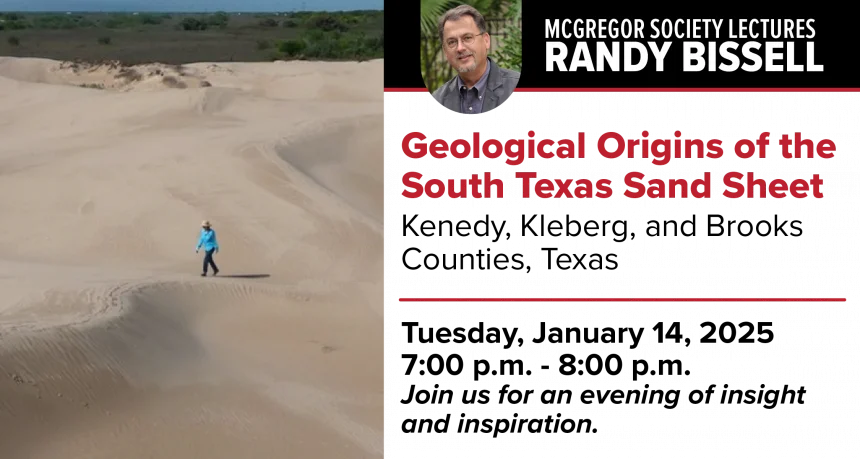Geological Origins of the South Texas Sand Sheet

About Randy Bissell
Mr. Randy Bissell is an adjunct professor at Texas A&M University-Corpus Christi, where he provides industry insights and relevance to the geosciences academic program as Graduate Faculty and Research Associate. He is a Texas Master Naturalist™ providing geoscience-related service and training volunteers to work in local, state, and federal parks. Randy has 40 years of experience in petroleum exploration and development with Exxon for 15 years and today with Headington Energy, working in deep South Texas Vicksburg and Frio productive trends. He attended the University of Southern Mississippi for his BS (’82) and Oklahoma State University for his MS (’84) degrees in geology. He is a Licensed Professional Geoscientist in Texas and a registered SIPES member. Randy has been awarded honorary membership in the Corpus Christi Geological Society and the Gulf Coast Association of Geological Societies.
Presentation Summary
The Llano Mesteño, or “Wild Horse Desert,” also known as the South Texas Sand Sheet, spans more than 2700 square miles of south Texas. It’s defined, in part, by the broad sand and silt veneer that covers the coastal plain strata. Rivers and streams seem essentially absent on the South Texas Sand Sheet but are they?

During the last “Wisconsin” Ice Age, 100,000 to 15,000 BCE, what we now know as the South Texas coastal plain was carved by deep rivers and creeks. While the Rio Grande flows to the Gulf, other rivers contribute to the Laguna Madre estuary behind Padre and Mustang Islands. Baffin Bay and Nueces/Corpus Christi Bay are drowned Pleistocene river valleys fed by low-discharge rivers. However, there are no rivers on the Sand Sheet in Kenedy and Brooks counties, and Kleberg County is bordered by Olmos and San Fernando creeks. Recent research indicates that modern vegetation may reveal buried waterways beneath the Sand Sheet. Join us to explore the sea-level and climate events that may have led to the burial of this coastal drainage system. Is there evidence of a Pleistocene watershed beneath the dunes?


